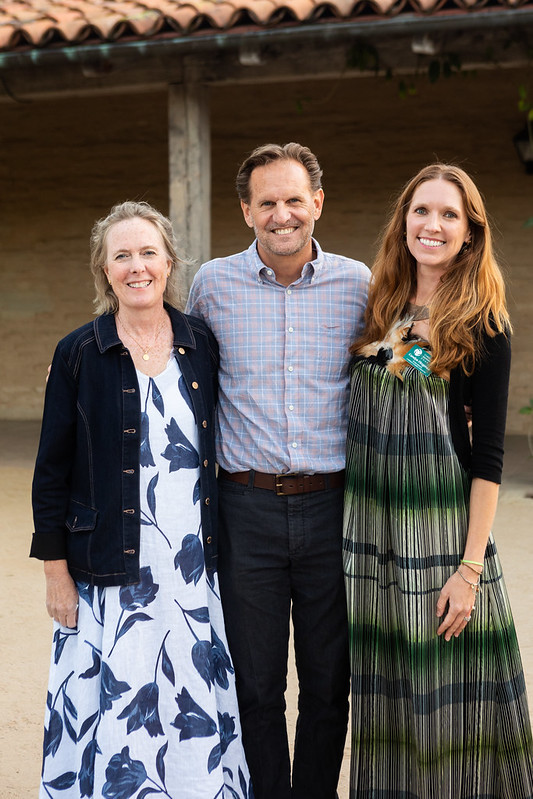Metamorphosis for the Environment

It would be nearly impossible to list the many unique features of Santa Barbara County that differentiate us from other places across the country. In contrast to all the incredible positive attributes, I recently learned of one startling distinction that may surprise you: our county is one of the fastest-warming places in the nation. According to analysts at the Washington Post, who examined 130 years of climate data, the region from Point Conception to the border of California and Mexico is warming twice as fast as the rest of the country. Here in Santa Barbara County, our average temperatures have already warmed by 2.3 degrees Celsius – a little over 4 degrees Fahrenheit – since pre-industrial levels.
This alarming data was exceptionally reported on and put into context by Scott Wilson, Washington Post journalist, in his Pulitzer Prize winning article, “Fires, floods and free parking: California’s unending fight against climate change.” We are grateful to claim Scott as one of Santa Barbara’s own; he was born and raised here before launching an impressive career in journalism around the world, as well as at the helm of the upper echelons of national media in Washington, D.C. Several years ago, Scott returned home with his family and now covers important issues in California and the West for the Washington Post’s global audience.
This past week, Scott was the keynote speaker for the Community Environmental Council’s (CEC) spring fundraiser, Metamorphosis, which brought together a few hundred community leaders and elected officials, including Supervisors Das Williams and Joan Hartmann, and was chaired by Carolyn Fitzgerald and Leanne Schlinger. For over fifty years, CEC has taken leadership in environmental action, providing unrelenting, focused, and inclusive solutions related to energy, waste, transportation, equity, and food.
Scott brilliantly navigated the challenge of painting a dire but real picture, while providing the inspiration we need to double down on the vision for progress that CEC has set forward. He told the riveted crowd:
“The cradle of the Earth Day movement is now confronting the consequences of a warming Earth. We know this – especially those of us who have lived here for some time. We can feel it. We have seen it in the Thomas Fire and the immediate weather whiplash, from flames to flood, that brought down the mountainside behind Montecito, killing nearly two dozen people. The rush of mud and debris carried some of the victims out of their houses and to the sea.
“We feel it in the warming ocean, which as I wrote last year, has in part led to a large northward expansion of great white shark nurseries, including a thriving one off the beach at Padaro and Santa Claus lanes, as every summer surf-camp parent here knows.
“Just how fast the environment is changing can be measured beyond temperature. In December of 2017, the Thomas Fire began burning nearly 300,000 acres between here and Ojai, making it the largest in California’s modern history. That record lasted less than a year. It now ranks 8th on the list.”
Sigrid Wright, CEO of CEC, put Scott’s December 2019 article into context, noting that it was important not only for its content but for what it did to normalize climate change coverage by major news outlets.
“Until then you were hard-pressed to open one of the major daily papers or turn on CNN and see coverage on climate change. Today it’s the opposite. Scott helped flip the script,” Sigrid noted, adding, “Which is how it should be, right? Shouldn’t the unraveling of the biological systems we rely on for life be the above-the-fold story every day?”
After detailing the impacts of our area based on his extensive reporting, Scott addressed the pressing question on the mind of his audience: Why is this happening here and what can we do?
Our region is warming at a record pace, he said, “because we are not doing enough. And we, of all places, can serve as an example.” He reminded us how climate scientists have repeatedly demonstrated that the predicted climate catastrophe can be avoided by living up to goals set in the Paris Accord. While the perspective he shared is global, the recommendations he pressed centered on local initiatives. He pointed to the fact that the commitment and regulations of our federal government are ever changing with new political leadership – “what is law one day, vanishes the next” – yet the steps we take on the local and regional level, supported by forward thinking political leadership, remain constant and impactful.
Laura Capps is a strategic communications and public affairs consultant. She served on the board of the Community Environmental Council for six years including two as President. Capps is currently on CEC’s President’s Council.







